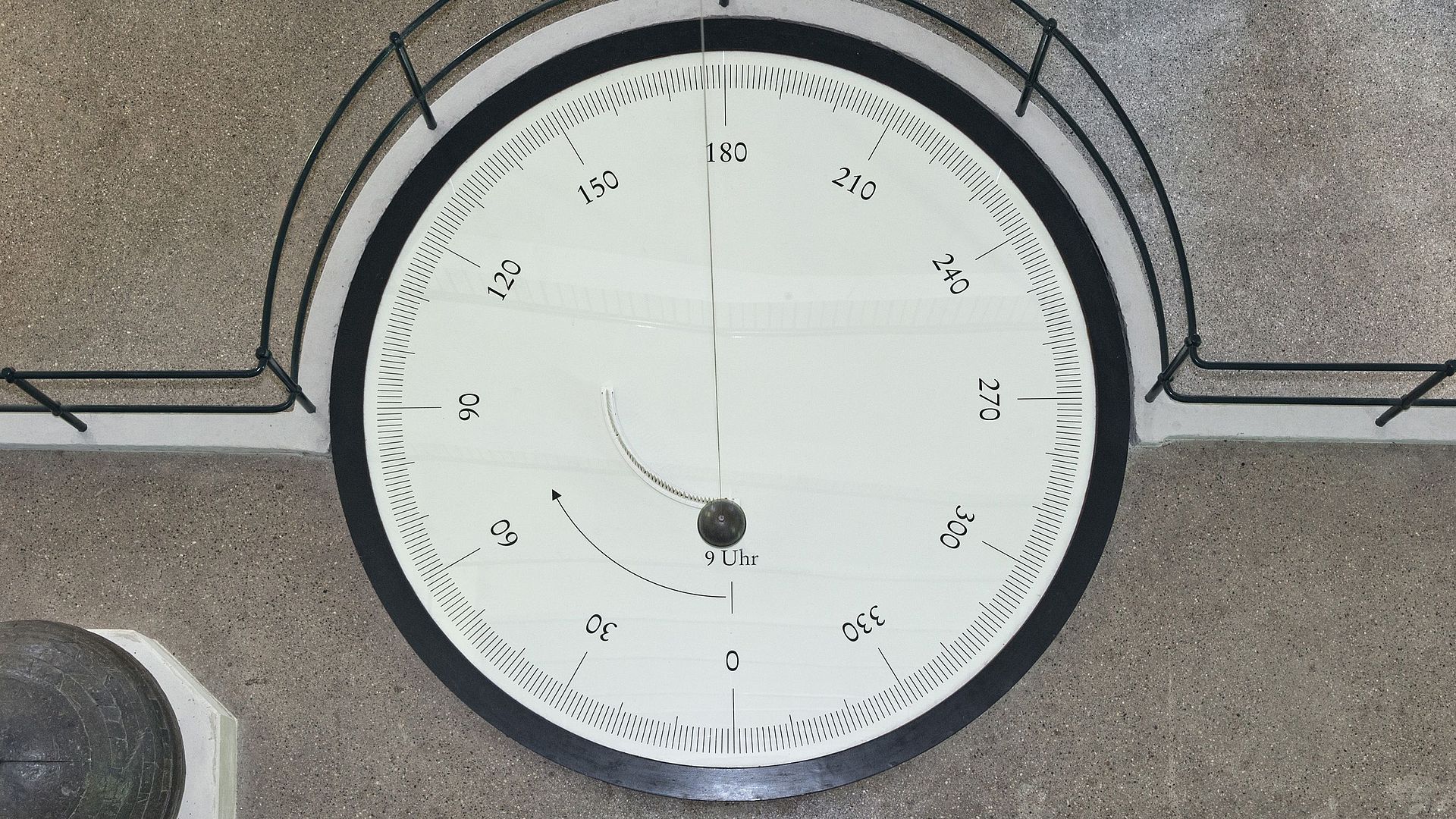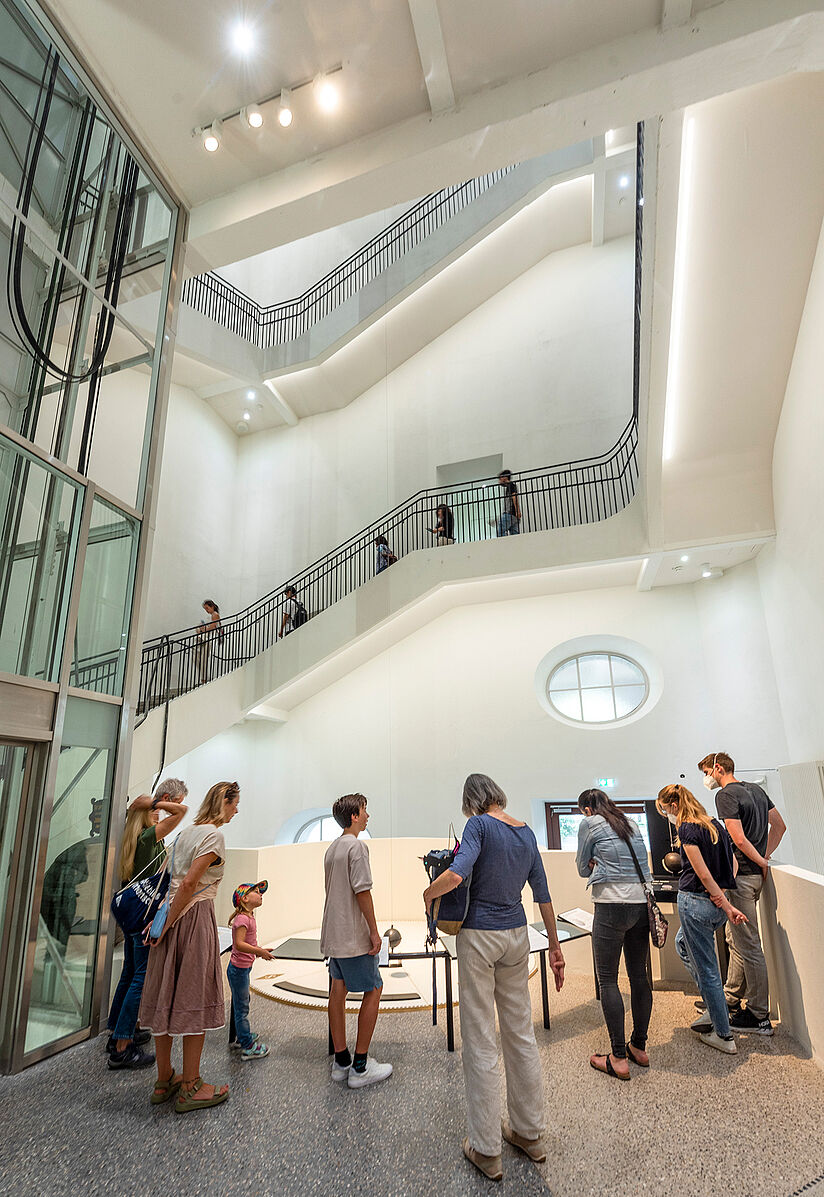
Photo: Deutsches Museum
Natural Sciences
Foucault’s Pendulum – See the Earth rotate!
A lead ball swings back and forth at the end of a long rope, knocking over cone after cone on the floor below. Here – at the foot of the Museum Tower – you can see and hear the rotation of the Earth!

Inside the museum tower, a 30-kilogram lead sphere swings slowly back and forth, suspended from a steel cable approximately 60 meters long Photo: Deutsches Museum, München | Hubert Czech
Standstill at 1117 km/h
Weather station, transmission mast, vantage point and pendulum home: the tower of the Deutsches Museum is much more than the museum's architectural landmark. The entrance on the ground floor is located at the transition between the model railway and bridges and hydraulic engineering exhibitions. Here you can experience a Foucault pendulum in action during the museum's opening hours.
On display is a 30 kg lead ball that swings slowly back and forth on a 60 metre long wire rope. Below the sphere is a circular disc with a diameter of 3 m, which indicates the cardinal points and on which more than 60 movable cones are placed in a semicircle. The sphere always swings in the same plane. Nevertheless, after a few minutes it knocks over one cone after the other, proving that the earth is rotating - beneath the pendulum. And it doesn't do so slowly at all: at our latitude, the earth rotates at a speed of around 1117 km/h.
To the left of the pendulum you can see another, much larger sphere: The physicist Philipp von Jolly (1809-1884) used this lead ball weighing almost 5800 kg to determine the density of the earth
More than 60 movable cones are placed on the circular disk beneath the pendulum. Photo: Deutsches Museum, München | Hubert Czech
The rotation of the earth
... experience it with all your senses! With the Foucault pendulum, the rotation of the earth is not only visible, but can also be heard and felt. The music mechanic Gerhard Kern developed a mechanism for striking a sound disc. Sensors were developed in the workshops of the Deutsches Museum that register when a cone falls over. The sound is therefore produced live every time it falls over. There is also a tactile demonstration - developed in the museum's own workshops.
View Inside the Foucault’s Pendulum Exhibition
Video tour by the curator (in German)
The Foucault pendulum
Since 1925, the rotation of the earth has been made visible and even audible in the Deutsches Museum: Physics curator Daniela Schneevoigt presents Foucault's pendulum in the tower of the Deutsches Museum and reports exciting facts about the exhibition.
You have specialist questions for our curator?
![]()
Dr. Daniela Schneevoigt
Curator
Department of Physics, Geophysics, Geodesy, Weights and MeasuresMuseumsinsel 1
80306 Munich
Fax +49 89 2179 99350
Email d.schneevoigt@deutsches-museum.de
Do you have organizational questions?
Cornelia Schubert
Assistance to department heads, main department heads and curators
Susanne Schmölz
Assistance to department heads, main department heads and curators


